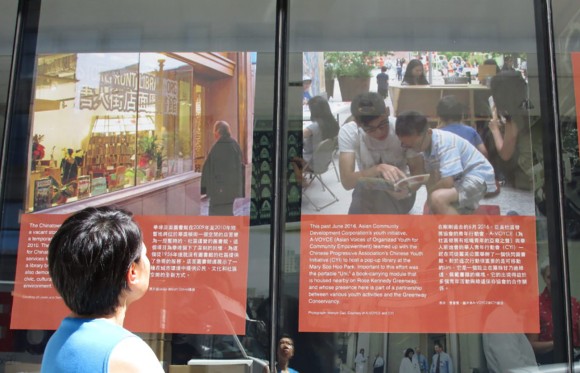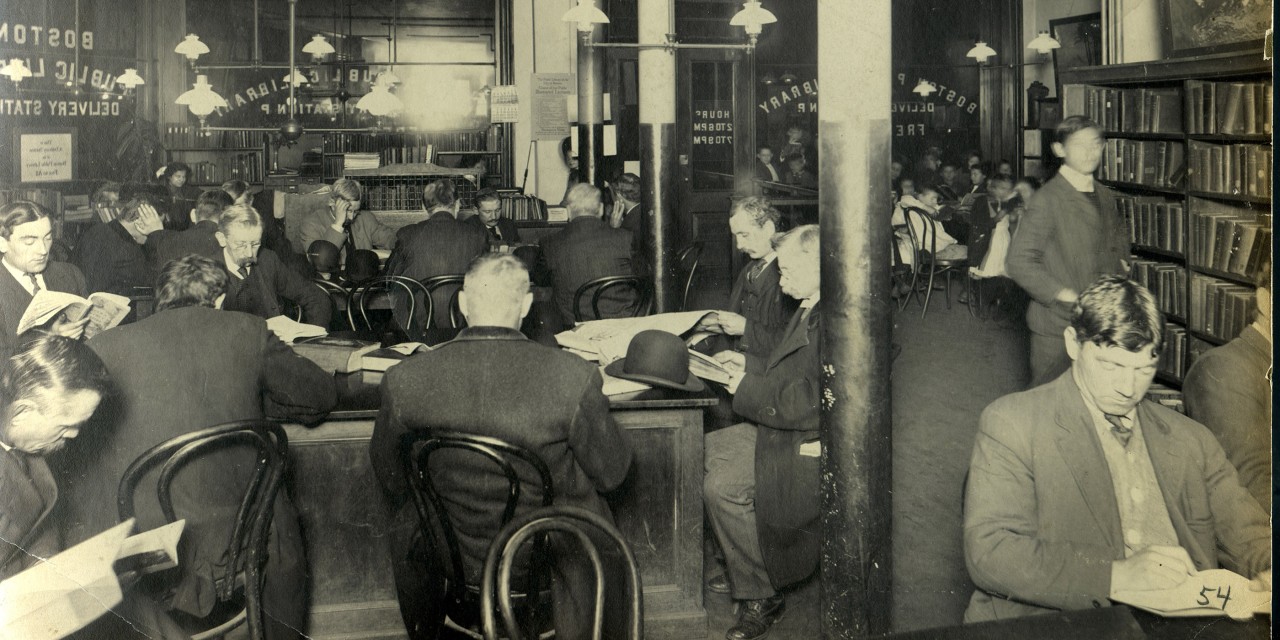These Words showcased the rich history of printing, reading, and writing in Boston’s Chinatown, with a bilingual open air exhibition and series of public events. Created in collaboration with the Chinese Historical Society of New England, These Words preserved the neighborhood’s rich history with the written word and helped amplify local voices calling for the reinstitution of a Chinatown branch library. Partly as a result of the exhibition’s work, the community is now home to a temporary English- and Mandarin-focused branch of the Boston Public Library while the city plans for a permanent home for the library.

The exhibition was created by, with, and for the Chinese community of the neighborhood. All exhibition materials were bilingual, written in English and translated into Chinese by a local journalist to ensure broad accessibility. Most of the images used came from the Chinese Historical Society of New England, which collaborated in all stages of the research and production of the exhibition and associated programming, including an artistic projection event and a conference.
Co-curator Diane O’Donoghue explains that the exhibition was developed in order to both create an experience for the neighborhood and to make a historical case for the (at least temporary) reestablishment of the Chinatown branch of the Boston Public Library.
“These Words was an opportunity to utilize a format that is extremely prevalent in the humanities (an exhibition)... in the service of both a neighborhood experience in the public sphere and activism on behalf of a very important issue within that particular neighborhood... the return of the public library.” O’Donoghue reflects. The exhibition “situate[s] the arguments… for that library in the context of 100 years of printing, reading, and writing, in that neighborhood.”
The exhibition consisted of four outdoor panels, which told the story of the Boston neighborhood and its ongoing commitment to the written word. The first three were historical, focusing on the Oxford Street Community Bulletin Board, a wall at Oxford Street and Beach Street on which the community communicated with posters; the Shanghai Printing Company, a bilingual printing company that printed everything from laundry tickets to texts for local universities; and the history of libraries in the Chinatown-area from 1896 to 1954.

The fourth panel focused on the the more recent past, present, and future, describing community efforts to bring about a return of the Boston Public Library to Chinatown. This panel described work that began in 2001 when the community came together to form the Friends of the Chinatown Library committee. Working together, volunteers created a temporary library in a storefront and a reading room in an apartment complex.
It was important to the curators that the exhibition be outdoors.
“Because this had an advocacy mission rather than a purely archival exhibition mission, we wanted it to be something that people would see in the course of their daily life experience,” O’Donoghue explains. “This achieved that.”
In order to display these small items outdoors, the curators printed their panels as “window perfs”—high definition perforated window signs displayed in Chinatown in front of the historic China Trade Building and the Tufts Medical School Bookstore. Window perfs are typically used in advertising in shop windows and on public busses. They enabled high definition color printing on a large scale at a lower cost, highlighting the intricate details of objects as small as laundry tickets printed by the Shanghai Printing Company.
These Words also included a range of supplementary programming, including a projection of archival images of a community bulletin board onto the wall on which it was once affixed at Oxford and Beach.
“The wall on which all those postings had taken place for 70 years had been left untouched, so we planned nighttime projections that were popular and quite poignant,” O’Donoghue explains. “Working with a projection artist, I was able to create a bilingual program where you would see the projection of the photographs from the archives back onto the original wall and it was very powerful.”
O’Donoghue explains that the community’s efforts to return a branch library to Chinatown had been “at a bit of a standstill,” but this changed when the exhibition opening coincided with changes in leadership at City Hall and the Boston Public Library. The exhibition helped the community make the case for the legacy of the written word in the community and a new branch library. The temporary home of the new branch is in the China Trade Center—one of the two buildings in which the exhibition’s window perfs were affixed.
While the exhibition is now closed, this exhibition model is highly replicable and indeed has already been employed in Providence, Rhode Island.
